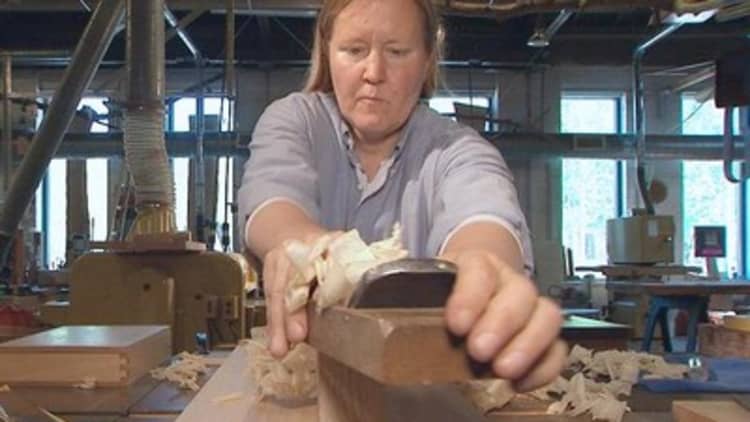
When her company moved her position to Japan in 1999, Goldman Sachs technologist Jessica Wickham jumped at the chance to live abroad.
But while it was a thrill to live overseas, Wickham found that working for a US-based investment bank in Asia meant extra-long workdays. "You're not only doing your day job, but at night you're on conference calls," she told CNBC. So she started looking for a way to unwind during her limited free time.
She remembered seeing an exhibit back home in New York City, featuring traditional Japanese joinery – the technique of joining two pieces of material. The exquisite craftsmanship had stuck with her for years afterward, and Wickham decided to try her hand at it. "It was a way to connect to Japan and to do something with my hands," she explained. She found a local study group devoted to joinery and began attending their meetings on the weekends. Immediately, she felt connected to the materials and the craft. "It really kept me sane," she said.
After 9/11, Wickham's position at Goldman Sachs was moved back to New York, but she wasn't ready to leave Japan. So she resigned and stayed in Japan, studying joinery until her work visa expired a year later.
Read More Creating a more colorful career
When Wickham returned to the U.S. in 2003, she moved back to New York, but not to Wall Street. Instead, she rented studio space in an old factory upstate, bought a few tools and consulted with local sawyers and woodworkers about how to start her own business. With the help of one employee, she "figured stuff out," making tables with the tools and techniques she'd brought back from Japan. "The first three years was about accumulating material; inventory, tools, finding the machines," she said.
Her first big break came when an architect saw some of her work displayed in a Brooklyn gallery and subsequently hired her to build conference tables for the National Audobon Society's headquarters. Publicity soon followed, but so did the economic downturn. "It was really bad in the furniture industry," she said. "It was a pretty dry period for a few years."
Wickham used the unexpected downtime to move her furniture studio to Beacon, New York, which had a thriving artist community. The new space allowed for the storage of the life-size tree segments that she brings over from her mill. Often, Wickham will craft a piece of furniture from a single tree. The process of sawing, drying and crafting can be a years-long process.
Read MoreAn accidental innkeeper
Today, with the help of 2 employees, she builds tables and benches for restaurants, hotels and private clients, ranging in price from $1,000 - $25,000 per piece. Recently, she was hired to make tables for a Japanese restaurant in New York, a commission that feels fitting for Wickham. "It's been really nice to come full-circle and to be able to work for Japanese clients," she said. "It's an honor."

